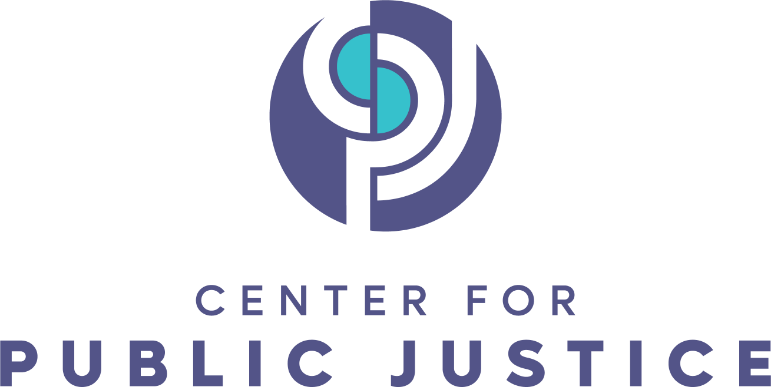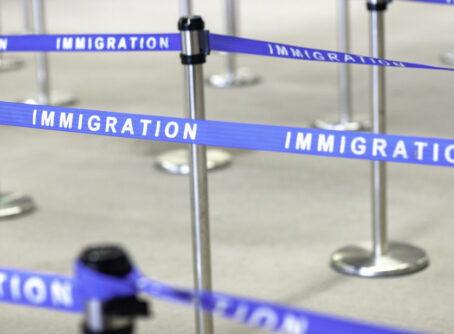
On July 1, 2021, Attorney General Merrick Garland issued a moratorium — essentially a pause of the law — on federal executions in order to conduct reviews of the death penalty. This decision followed the previous administration’s execution of 13 people on federal death row from July 2020 to January 2021, which marked the first federal executions in 17 years. It also marked the most under any presidential administration in 56 years. President Biden is the first sitting president to publicly oppose the federal death penalty, and public support for the death penalty is at nearly-historic lows. With clear opposition to the death penalty from public opinion and our nation’s leadership, now is an opportune time to reform our federal capital punishment system.
A death sentence may be imposed at either the state or the federal level. At present, the death penalty (i.e., capital punishment) is legal in federal courts and in 27 state court systems. Federal prosecutors are only allowed to seek the death penalty for about 60 categories of crime. These include federal crimes like treason, espionage, or murder of a member of the Supreme Court or Congress. Forty-six people currently sit on federal death row awaiting execution.
Defendants are more commonly charged in state courts with state crimes that could warrant capital punishment, such as murders committed within that state’s territory. The death penalty is becoming less common in states—in 2021, Virginia, which, in 1608, carried out the first execution ever in the U.S. and has executed the second-highest number of people of any state, became the 23rd state to outlaw capital punishment. Three other states have issued moratoriums on executions. But in some cases, prosecutors have the option to seek federal or state charges, which means that people can be sentenced and executed even in those 26 states that no longer have or use capital punishment.
The federal death penalty does not deter more crime than other forms of punishment. Its application is often discriminatory, disproportionately applied against people of color and lower-income individuals. Many argue that the death penalty is a violation of the ethics of life and human dignity. Abolishing the federal death penalty is a critical next step in forming a more just society for all.
A BROKEN SYSTEM: FEDERAL CAPITAL PUNISHMENT
Modern federal death row debate centers around a series of legislative and judicial decisions. In 1972, when the Supreme Court ruled in Furman v. Georgia that capital punishment violated the 8th Amendment when the sentence was applied in an “arbitrary or discriminatory” manner, the Court did not plainly outline what kinds of procedures would be needed to avoid this arbitrariness. After a four-year moratorium on all executions and the commutation of almost 600 sentences around the country from death row to life in prison without parole, the Supreme Court overturned Furman in a series of state cases in 1976. The Court considered four state cases at the same time, ultimately concluding that capital punishment did not violate the Eighth Amendment as long as there was a multi-step process to determine a defendant’s eligibility. The death penalty was reinstated and federally expanded in 1988 when Congress passed the Anti-Drug Abuse Act, which established the death penalty for intentional murder related to a major drug felony. The Death Penalty Act of 1994 further expanded the list of crimes eligible for punishment by death, followed by more expansions in 1996 and 2005.
Those indicted with a capital crime, punishable with the death penalty, are assigned two defense attorneys and prosecuted by a federal attorney. To sentence someone to federal capital punishment, the U.S. Attorney General must approve the local attorneys’ charge, and a Department of Justice (DOJ) panel reviews the defense attorney’s appeal not to pursue the death penalty If convicted, only the president can grant clemency and commute their sentence to life in prison without parole. Those on death row can spend years waiting for their execution. The Death Penalty Information Center reported that over half of all prisoners on both state and federal death row in 2021 had waited over 20 years before they were executed.
During this waiting period, defendants are allowed one appeal (with certain exceptions on a case-by-case basis). And despite long, drawn-out cases, “guilty” verdicts are not necessarily reliable ones. To date, 172 people have been successfully exonerated from federal death row. Framed another way, 1 in every 9 people on federal death row has been released for a wrongful conviction. And exonerations can take years — it’s common to wait 25 to 30 years.
Moreover, systemic injustice plagues capital punishment cases. Prosecutors exercise discretion about whether to pursue the death penalty in the first place. In this, political considerations may come into play, since prosecutors are typically elected. Racial disparities are also evident. The race of the victim typically matters more than the race of the defendant, and cases with white victims are disproportionately overrepresented on death row. If a victim is a white person, the defendant is 17 times more likely to be sentenced to death than if the victim is non-white, according to a 2020 Harvard study. This is true even controlling for other variables, like the number of victims or the brutality of the crime.
“Abolishing the federal death penalty is a critical next step in forming a more just society for all.
Lower-income defendants are less likely to be able to afford the extensive legal defense necessary for lengthy capital punishment cases. Instead, they receive court-ordered defense attorneys who are often overworked, inexperienced, and underfunded, which means that less time is devoted to ensuring their cases are adequately represented. There is clear evidence that when attorneys devote less time to a case, the chances of a death sentence dramatically increase. In the words of the Reverend Dr. Jack Sullivan, a death row reform advocate whose sister was murdered, “if you don’t have the capital, you get the punishment.” This lack of representation also has racial implications, because race and class are often systemically intertwined; of total wrongful death row convictions, roughly 54 percent of defendants who were later exonerated were Black.
Even the execution process itself is fundamentally flawed. Lethal injection, the federal government’s choice of execution method, is not necessarily more humane than the electric chairs, firing squads, or even cyanide hydrogen — the gas used in Nazi gas chambers—that some states use. Many pharmaceutical companies have placed heavy restrictions on sales for the drugs used in lethal injections because they cause so much physical and psychological pain. Lethal injections cause prolonged severe mental anguish and panic as the recipient experiences pulmonary edema, or internal drowning from fluid in the lungs.
Clearly, federal capital punishment is rife with problems. Does this broken system really bring about the justice that it claims to uphold?
SEEKING JUSTICE THAT RESTORES
Justice seeks to right wrongs suffered by individuals and communities without inflicting further undue harm on victims or perpetrators. Death row is intended to protect society by deterring future crime while also punishing people who have committed the worst kinds of crimes. According to a Pew study, most citizens who support it say that it is morally justified only for crimes, “like murder,” where lives are taken. Capital punishment is supposed to deliver retributive justice in its purest form: paying someone their due. An eye for an eye and a life for a life. But can justice be delivered without taking another human life?
As Christians, we believe that each person—regardless of what they have done—bears the imago Dei (the image of God). This understanding bestows an inherent sense of worth and dignity that can never be stripped away from someone. The killing of any person violates their God-given dignity. It deems them an expendable image of God.
True justice for all begins with the protection of every individual’s dignity. It restores peace over perpetuating cyclical violence. It upholds the imago Dei. It balances retribution with restoration. Restorative justice incorporates punishment but goes beyond it, viewing justice as a process for healing, often asking victims and perpetrators to confront the injury to repair the damage. This type of justice, particularly in cases of murder, is radical and difficult. The restorative justice process begins with recognizing the humanity of the perpetrator and declaring that their life still has inherent worth. Nothing they do can ever remove the imago Dei from their identity. Bryan Stevenson, founder of the Equal Justice Initiative and a defense attorney on death row, sums up in his memoir Just Mercy how time in close proximity with incarcerated people taught him “each of us is more than the worst thing we’ve ever done.”
Rooted in each individual’s inherent dignity, we must proclaim an ethic of life. Each life matters because it is part of the reflection of the image of God. We can draw from Catholic Social Teaching, which declares the importance of life from conception to natural death. In the Evangelium Vitae, a declaration on the value of life, John Paul II calls the church “the people of life and for life.” If the church is to proclaim an ethic of life, it must proclaim a consistent ethic of life informed by an understanding of mercy and grace. We are all more than our worst mistake. Our lives hold innate value because of this. True justice must recognize and uphold this value.
And the heart of justice is the restoration of right relationships in the world. Forgiveness is an integral step in the Christian tradition of the restoration of right relationships. It is never owed by a victim, but it is a freely offered step in reconciliation and healing. This choice to forgive restores agency to the victim as he or she actively reaffirms Stevenson’s point: everyone is capable of restoration, no matter their actions. It can take years, if ever, for victims’ families to move towards a space of forgiveness, but as Dr. Stephen Monsma notes in a 2014 Capital Commentary article, taking the perpetrator’s life removes “even the possibility of there being reconciliation … Some may see this possibility of reconciliation to be hopelessly idealistic, but with God all things are possible.” Christians must maintain hope and openness to reconciliation and restoration, even if it takes years. No matter what someone has done, killing them is not the answer. Justice can be fully served without more violence.
A PUBLIC JUSTICE FRAMEWORK
Public justice, the guiding principle for the government’s work, affirms that the government contributes to human flourishing by securing the common good—that is, promoting “the well-being of an entire society in right relationship with the larger world that God made.” It is authorized to restrain sin in law and provide lawful retribution for injustice as part of this promotion of right relationship.
The Center for Public Justice’s Guideline on Government states that the government has a responsibility to be responsive to all aspects of justice and seek to balance them. Justice is multifaceted, often referred to in four dimensions: distributive, procedural, retributive, and restorative. Capital punishment raises questions about the balance of retributive and restorative justice. CPJ’s Guideline explains that as it pursues public justice, the government has an imperative to balance retributive and restorative justice, both “punish[ing] offenses and seek[ing] restitution and reconciliation.”
“The heart of justice is the restoration of right relationships in the world.
Capital punishment does not balance the dimensions of justice. It centers only on retributive justice, narrowly pursuing recompense for a crime. It’s plagued with structural injustices, violating procedural justice. Death row is designed to completely strip someone of their dignity and humanity, violating Christian ethics of life and the imago Dei and negating possibilities for restoration. A 2016 study from the University of Minnesota reported that just 2.5 percent of victims’ families said that an execution helped them achieve closure. Executions do not restore families nor help them grieve; rather, they perpetuate further cycles of trauma for the families, according to multiple other psychological studies.
There is a way for the government to fulfill its responsibility to provide retribution for injustice while also promoting right relationships. Restorative justice is not the antithesis of retributive justice, and it does not simply entail amnesty. Punishment is integral to protecting society and giving dignity to victims and communities, acknowledging their hurt. Dr. Monsma’s commentary recognizes that “there is a readily available alternative to executing someone, namely, life imprisonment … it meets government’s duty to engage in retributive justice in its effort to protect public order and safety.”
Life imprisonment also leaves room for restoration and healing for perpetrators and victims—which is where civil society can enter. Public justice also recognizes that much of what contributes to flourishing is not the government’s task. The government must remain limited in scope and seek to primarily uphold the contributions and work of other institutions through its policies. This means that both the federal government and civil society institutions have roles to play in correcting the injustices perpetuated by the death penalty.
A ROLE FOR THE FEDERAL GOVERNMENT
The federal government has multiple ways it should act to end the federal death penalty and balance aspects of justice. First, the government must avoid taking life at all costs, because it violates God-given dignity and removes opportunities for healing and restoration. The data on exonerations also suggests high levels of violations of procedural justice at present—the government must strive to avoid incarcerating innocent individuals. Federal defense attorneys need better pay and more support to provide adequate representation for clients who cannot afford private representation. The Equal Justice Initiative has released reports on ongoing racial bias in many jury selection processes; prosecutors who unlawfully strike Black jurors from juries should be held accountable by judges and higher courts. Structural changes in the legal system will need to come in many forms to counteract procedural injustice.
The executive branch needs to maintain a consistent position about its stated opposition to the death penalty. Last June the Biden administration’s Department of Justice urged the Supreme Court to reinstate the death penalty for Dzhokhar Tsarnaev, one of the two brothers responsible for the 2013 Boston marathon bombing that resulted in four deaths. Even though the moratorium is still in effect, this March the Supreme Court upheld the death penalty ruling for Tsarnaev.
Additionally, President Biden should immediately commute all of the sentences of current federal death penalty prisoners. This does not mean releasing them, but rather changing all of their sentences to life in prison without parole. This measure still adequately protects society and distributes retributive justice while simultaneously showing mercy and leaving room for future restoration, enacting restorative justice. Congress should respond by passing legislation to ban federal capital punishment so that no administration can reinstate it. It’s unconscionable that federal courts can issue death sentences in states where it is illegal, particularly when the federal charges are no different than potential state charges, but prosecutors seek federal charges because they could not seek the state death penalty. This violates an ethic of life and impedes on state sovereignty.
A ROLE FOR CIVIL SOCIETY
Civil society institutions must bring attention to the injustices embedded within the federal capital punishment system. The Equal Justice Initiative (EJI), founded in 1989 by Harvard lawyer and Christian Bryan Stevenson, is a nonprofit organization that provides legal representation to incarcerated individuals who have been “illegally convicted, unfairly sentenced, or abused in state jails and prisons.” This representation extends to guilty and innocent individuals alike in pursuit of real justice for historically marginalized groups of people, including racial minorities and people with disabilities and mental illness. EJI provides quality legal representation to lower-income individuals to counteract unjust sentencing. It also focuses on highlighting the history of racial injustice in America, such as their museum on mass incarceration and the nation’s first memorial to victims of lynching. Stevenson and his EJI team elevate the voices and stories of their clients, respecting their God-given dignity as they pursue just sentencing and restoration of individuals and communities. This work is critical to pursuing public justice. We need civil society institutions on the frontlines of correcting systemic injustices, with enough funding to provide support to those who need it.
Other organizations are also undertaking important advocacy work. The Georgetown Initiative on Catholic Social Thought and Public Life hosted a public dialogue between multiple advocates for federal death row reform, educating individuals who may be less informed on systemic injustices. Some of these advocates, like Sister Helen Prejean, have also published books that elevate the voices of incarcerated individuals on death row. This respects the voices of those on death row. This work of humanization helps shape our public imagination of pathways for restoration and reconciliation. When we see all lives as valuable, we can start to reimagine healing for victims and perpetrators alike. The Catholic Mobilizing Network participates in similar work, offering educational opportunities, organizing advocacy initiatives, and facilitating prayer to end the death penalty.
Civil society institutions can also meet the needs of the survivors of violent crimes and loved ones of victims and perpetrators. Equal Justice USA (EJUSA) funds community-based healing and trauma programs for survivors. They have promoted and funded trauma-informed policing training programs, organized a coalition of faith-based individuals in advocacy against the death penalty, and provided over $4 million in funding to help local organizations provide trauma care to crime survivors. This crucial work helps victims regain agency and their own dignity, an integral step towards restoration and reconciliation of the whole community in the aftermath of injustices.
The church has joined and should continue to join these other institutions in counteracting these injustices. First, Christians must become a unified voice declaring that each person and each life has dignity. We cannot be divided, nor should we be one of the primary groups in support of the death penalty. If we are to preach an ethic of life, we must preach a consistent ethic of life. The church should continue to support important educational work about the myriad of injustices and prejudices embedded within death row. Faith-based and community-based organizations should continue pursuing a restorative vision of justice by advocating for healing for perpetrators and victims and declaring the worth and value of all lives involved.
A COMMITMENT TO HOPE
The church should engage in biblical lamentation at every loss of life. We should call attention to death and communally mourn it. But our engagement does not stop with lament. The practice of lament is rooted in hope: a visionary hope for a just society that preserves peace and compassion, limits the harm we can do to one another, and rights wrongdoing. This is true justice. Capital punishment does not preserve these characteristics; instead it is a barrier to each of them. And, as advocate Sister Helen Prejean reminds us, hope is an active verb. We lament death because we hope for full life. We lament that true justice is not yet recognized because we have hope that it can be. We do not passively wait on this hope for justice — we enact it by educating others, acting in our communities, and speaking out. There are roles for both government and civil society institutions to realize the multifaceted lenses of justice in society more fully. Each must do its part to end federal capital punishment and protect the dignity of all.
Natalie Nichols is a junior at Wheaton College in Wheaton, Illinois, studying international relations and English. She worked as the communications intern for the Center for Public Justice in Summer 2021.






